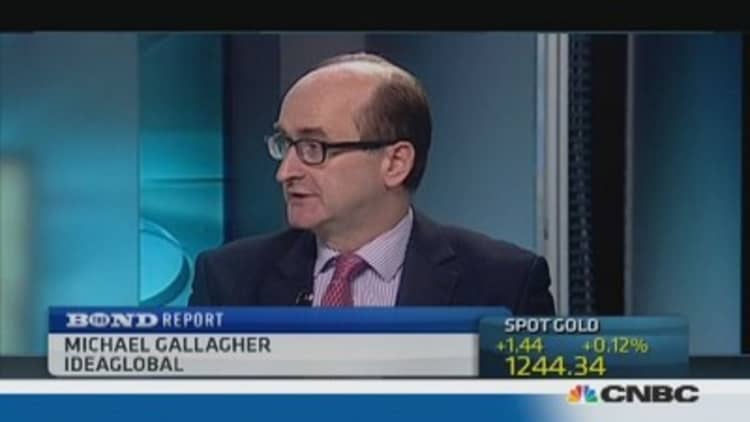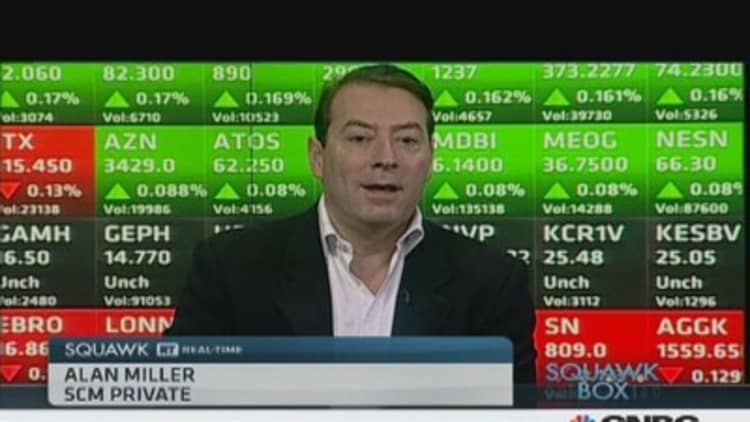
The index is on track to reach or exceed 2,000 points by the end of 2014, but the start of Federal Reserve tapering could provoke a fall of 10 percent or more, warned a senior investment analyst on Wednesday.
(Read more: Don't panic till the last of the bears gives up)
The S&P — a key index of 500 leading U.S.-listed shares — has rallied around 26 percent since the start of the year, boosted by hopes that the Fed will continue its bond buying program of $85 billion per month until the end of 2013.
Assuming the central bank starts gradually scaling back its purchases in March next year, Michael Gallagher of investment research firm IDEAglobal said market projections indicated the S&P would reach or top 2,000.
However, he warned that historical evidence suggested an imminent end to ultra-loose monetary policy could instead provoke markets into a correction, as happened with Tokyo's Nikkei index when the Japanese central bank started its own tapering in 2006.
(CNBC Explains: )
"The Bank of Japan actually started tapering and when it got quite advanced we then saw a Nikkei sell-off, and that sell-off was about 19 percent," said Gallagher, the director of research at IDEAglobal.
"So I think what we are warning is that yes, liquidity is going to be generous into the first half of 2014, but at some stage there is probably going to be a market correction, because the markets run ahead of the fundamentals."
The Bank of Japan was an early instigator of in March 2001, when it began purchasing Japanese government bonds. It quit the policy five years later amid signs Japan was emerging from , but readopted it following the global financial crisis.
The benchmark Nikkei fell 19 percent following the start of Japanese tapering in March 2006, falling from 17,563 points to 14,219 between April and June of that year.

Gallagher said that S&P P/E ratios (the ratio of companies' share prices to their earnings per share) were slightly extended, raising the likelihood of a Japan-style correction come Fed tapering.
(CNBC Explains: P/E ratio)
"The key message is that it is not going to be a straight line (for markets) next year. Tapering is going to cause bumpiness in the U.S. equity market and U.S. bond market, and that is going to have a spill over effect on global markets… If you are talking a correction that is 10 percent-plus, for most people in the market, that is quite a big correction," he told CNBC.
(Read more: Wall Street awaits data deluge ahead of holiday)
The S&P closed at around 1,803 points on Tuesday, having cleared the psychologically important 1,800-mark for the first time last week. A 10 percent correction would see the index at 1,622.
Several analysts and investors have forecast a correction in U.S. markets in recent weeks. Earlier this month, activist investor Carl Icahn sparked fear among investors when he warned of a "big drop" looming for stocks, because earnings at many companies were driven more by low borrowing costs than strong management.
(Read more: Stocks could see new volatility in 2014)
—By CNBC's Katy Barnato

